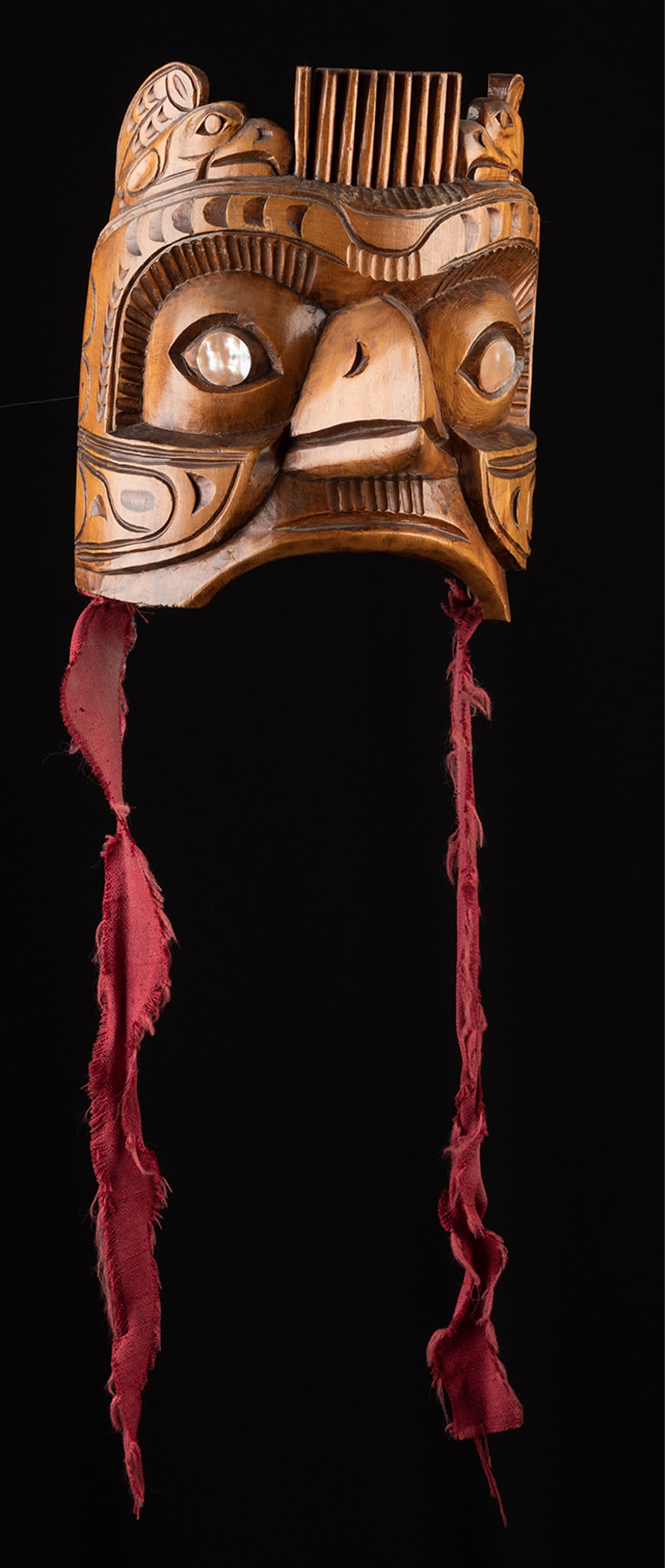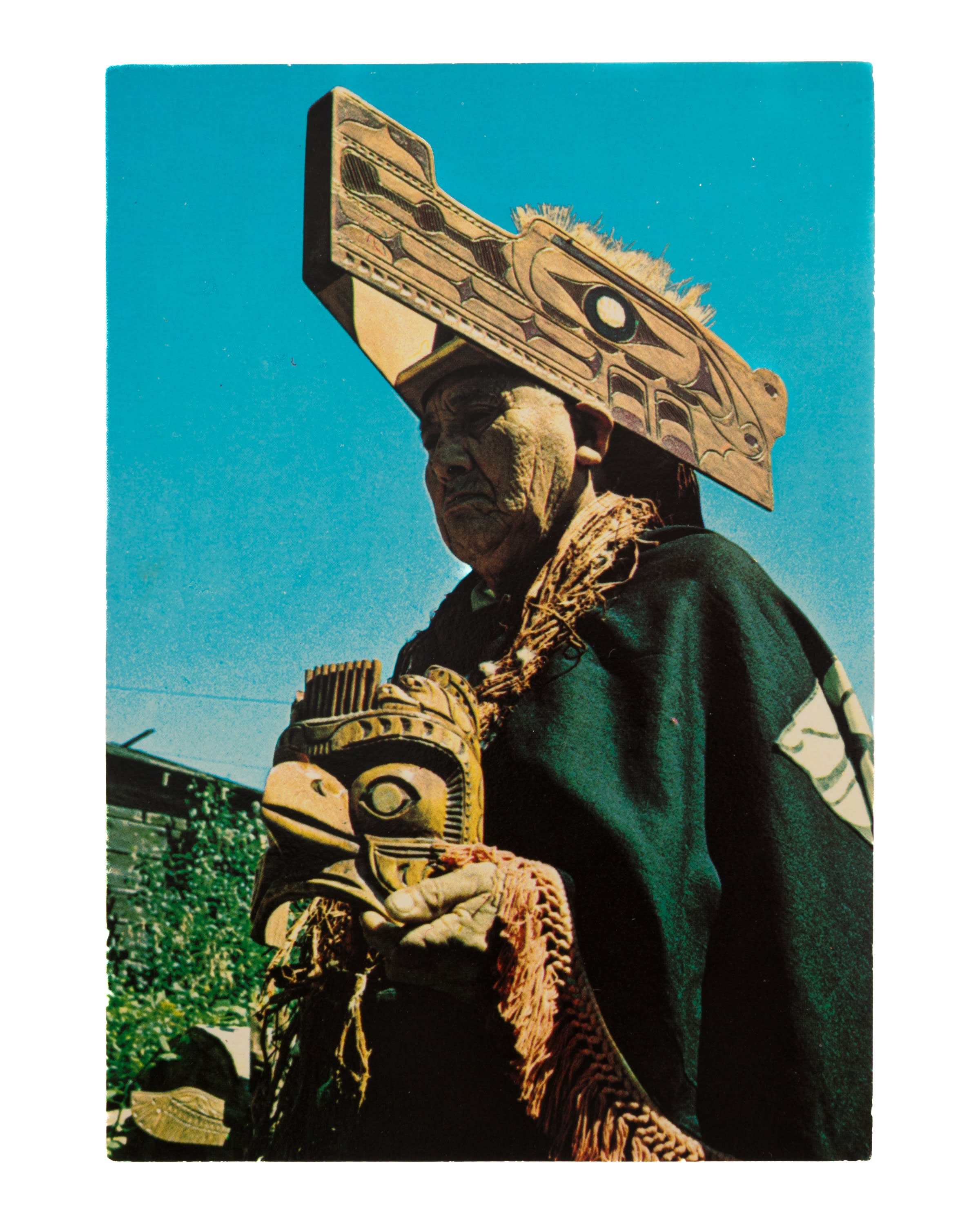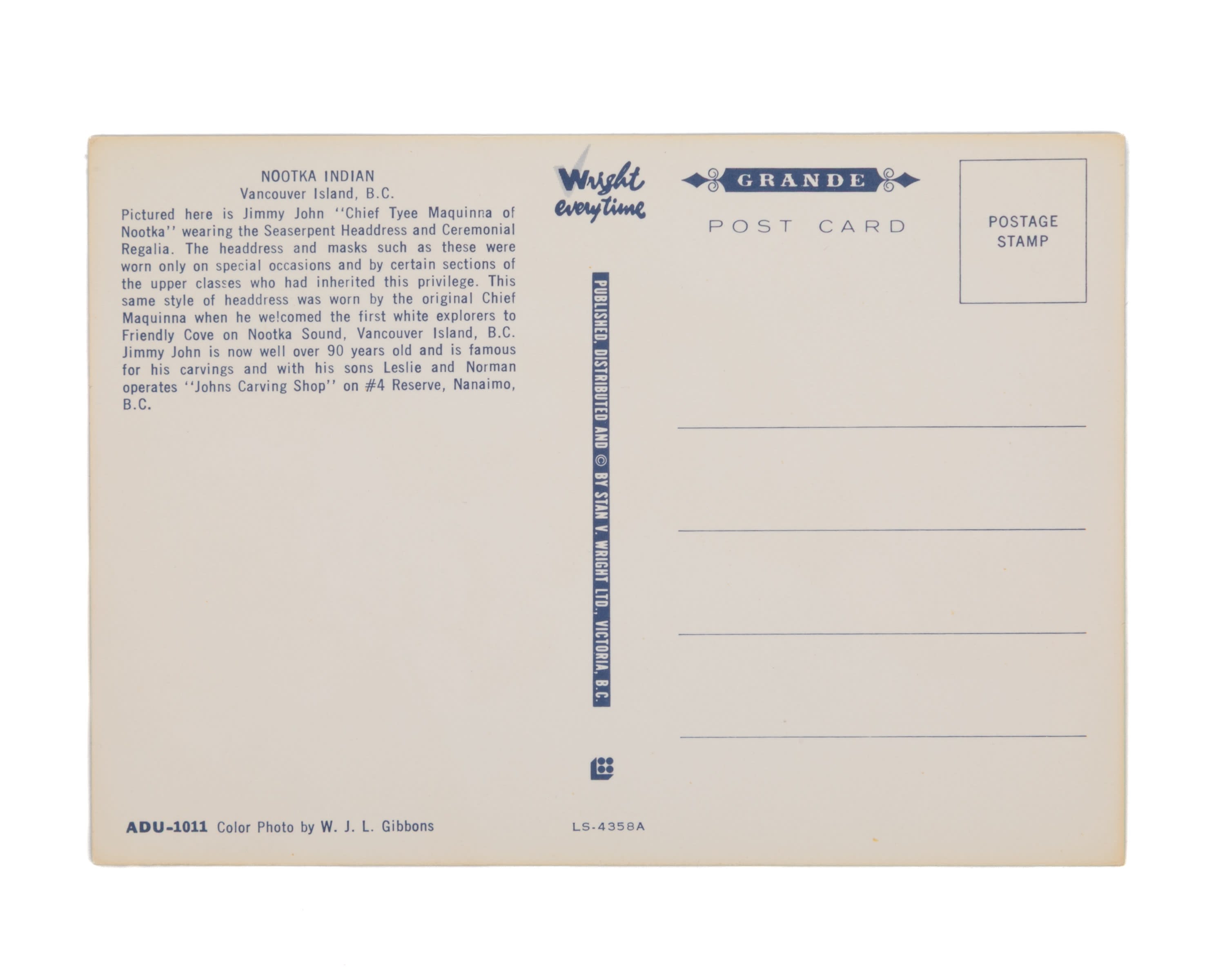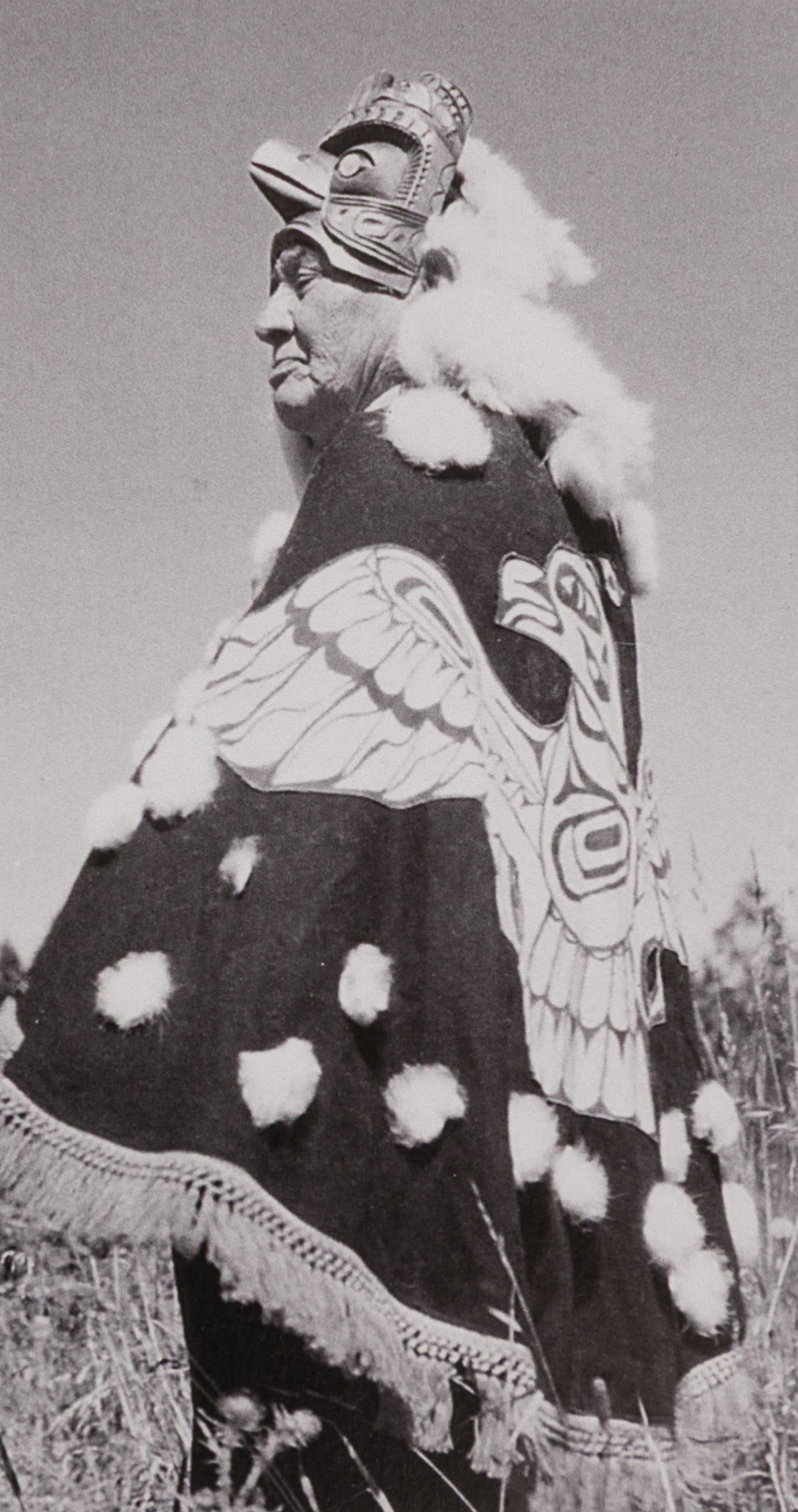Mowachaht First Nation artist Jimmy John (1876-1988) was born in the community of Yuquot, on the West Coast of Vancouver Island, and is a direct descendant of the Nuu-chah-nulth leader Maquinna (18th century, exact dates unknown). John was one of the most creative and prolific artists to work on the Northwest Coast in the 20th century. Thanks in large part to his extreme longevity (living to 112 years old), he was able to experiment with a wide range of media and styles over the course of his long life. John’s oeuvre runs the gamut from his earlier work, primarily consisting of brightly painted model poles and masks, to unpainted, fully chip-carved pieces later in life. His chip carving style evolved over the course of several decades beginning in the 1940s, reducing his palette to red and black, and often eliminating paint altogether. Although unpainted artworks have existed on the Northwest Coast for centuries, John’s chip-carving style often recalls tramp art more than other Northwest Coast carving methods and represents a distinct departure from customary Nuu-chah-nulth carving.

Lot 68
JIMMY JOHN
This red cedar headdress by John dates to the mid-20th century, perhaps c. 1950 or a bit later, and is a fine example of his chip carving method. Incredibly, Jimmy John would have been in his mid-70s if this piece were made in 1950. It’s an especially fine example of John’s mid-career work, representing a Grouse with a pair of Eagles framing the top of the headdress. The highly sculptural carving is embellished with inlaid abalone eyes and a series of u-forms, grooves, s-shapes, and ovoids that create the primary design elements around the eyes, eyebrows, and cheeks of the Grouse. The top of the mask is flanked by a pair of Eagles in profile, their wings each elaborated with an ovoid and two rows of u-shaped gouges, mirroring the patterns on the eyebrows of the grouse below. Rising from the centre of the headdress, between the two Eagles, are nine wooden spines representing sea lion whiskers that would help distribute Eagle down into the air while dancing. There are two copper bands, and two old, red cloth strips attached to the mask for it to be worn.


Pictured: W. J. L. Gibbons, Nootka Indian, Vancouver Island, B.C. (Victoria, B.C.: Stanley Park Wright Ltd., n.d.), colour postcard. This post card accompanies this lot.
This mask is well-documented, having appeared on a Stanley V. Wright (1906-2001) postcard [1] from the mid-1960s. In the colour photo, Jimmy John is wearing a Serpent Headdress, a button robe, and is holding this mask. Interestingly, this scene and pose is a motif that John would return to in his model pole production (see Lot 111, this sale). In the pole from Lot 111, the bottom figure is depicted as a man in a robe, wearing a Serpent Headdress and holding a smaller bird mask, just as John is in the postcard. The back of the postcard offers some interesting information about Jimmy John that I have not seen elsewhere:
“NOOTKA INDIAN/Vancouver Island, B.C./Pictured here is Jimmy John ‘Chief Tyee Maquinna of Nootka' wearing the Seaserpent [sic] Headdress and Ceremonial Regalia. The headdress and masks such as these were worn only on special occasions and by certain sections of the upper classes who had inherited this privilege. This same style of headdress was worn by the original Chief Maquinna when he welcomed the first white explorers to Friendly Cove on Nootka Sound, Vancouver Island, B.C. Jimmy John is now well over 90 years old and is famous for his carvings and with his sons Leslie and Norman operates ‘Johns Carving Shop' on #4 Reserve, Nanaimo, B.C.” [2]
There is another in situ photo of this headdress where it is being worn by Jimmy John published in Martha Black’s exhibition catalogue HuupuKwanum Tupaat: Out of the Mist: Treasures of the Nuu-Chah-Nulth Chiefs. [3] Like Wright, Black notes that this sort of headdress was a prerogative that only a few families held and that it may have come to the Nuu-chah-nulth through marriage. [4]

Jimmy John (1876–1988) wearing a dance cape and the present Lot 68. Photographed in 1964. RBCM PN 8965-35. From HuupuKwanum · Tupaat: Out of the Mist: Treasures of the Nuu-chah-nulth Chiefs, ed. Martha Black (Victoria: Royal British Columbia Museum, 1999), 107. A copy of this publication is being sold with this cedar frontlet.
I’ve been aware of this piece because of the Wright postcard for around the last twenty years, and it has been a real pleasure conducting this research and finally connecting with the actual headdress to make this work possible.
1. Wright Everytime Exhibit Resources. Victoria Stamp Club. December 31, 2023. https://vicstamps.com/wright-everytime/. Accessed 19 May 2025.
2. “Nootka Indian” postcard. Wright Every Time/Stan V. Wright Ltd., Victoria, BC. ND.
3. Martha Black. 1999. HuupuKwanum Tupaat: Out of the Mist: Treasures of the Nuu-Chah-Nulth Chiefs. Victoria: Royal British Columbia Museum. 107.
4. ibid.
